
Cloudy tank water can be a pain for any hobbyist. We all want to watch our beautiful fish in HD quality, right?
Aside from aesthetic reasons, sometimes cloudy water could be a sign of an unhealthy tank.
If you don’t take care of the situation, your fish may get sick and eventually die.
Read on to find out the possible culprits for cloudy water and learn how to rescue your fish.
Why Is My Saltwater Tank Cloudy?
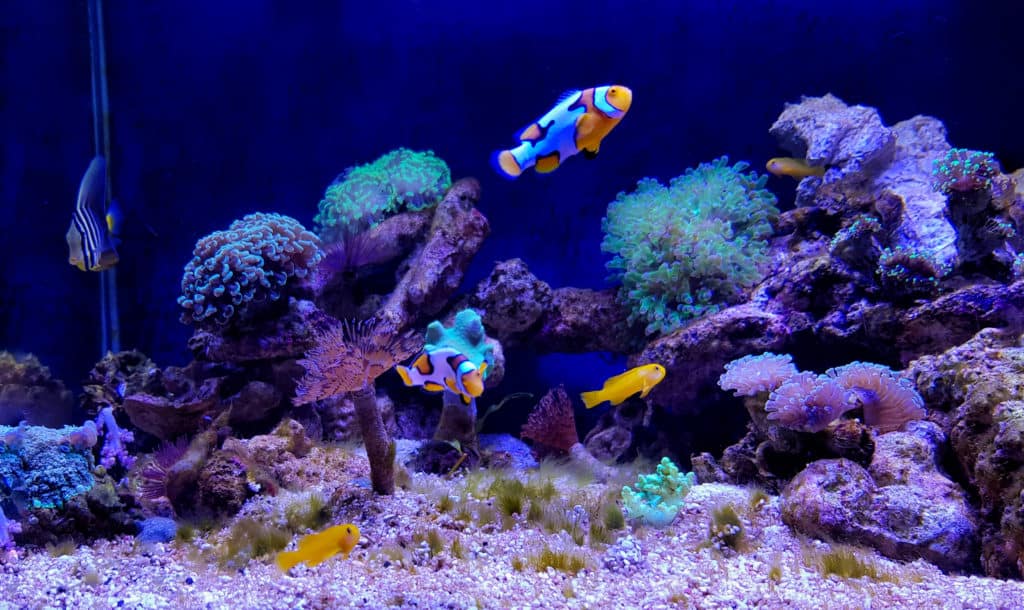
Your water could appear cloudy and lose its quality due to multiple reasons.
White, cloudy water is most common.
Its potential causes range from bacterial bloom and gravel residue to excess dissolved constitutes and spawning.
Algae blooms can bring up green cloudiness.
Poor water quality and overcrowding can turn your water yellow.
In the case of brown or black water, driftwood and dried leaves are most likely responsible.
Microbubbles can also make the water look hazy and fuzzy.
White Cloudy Water
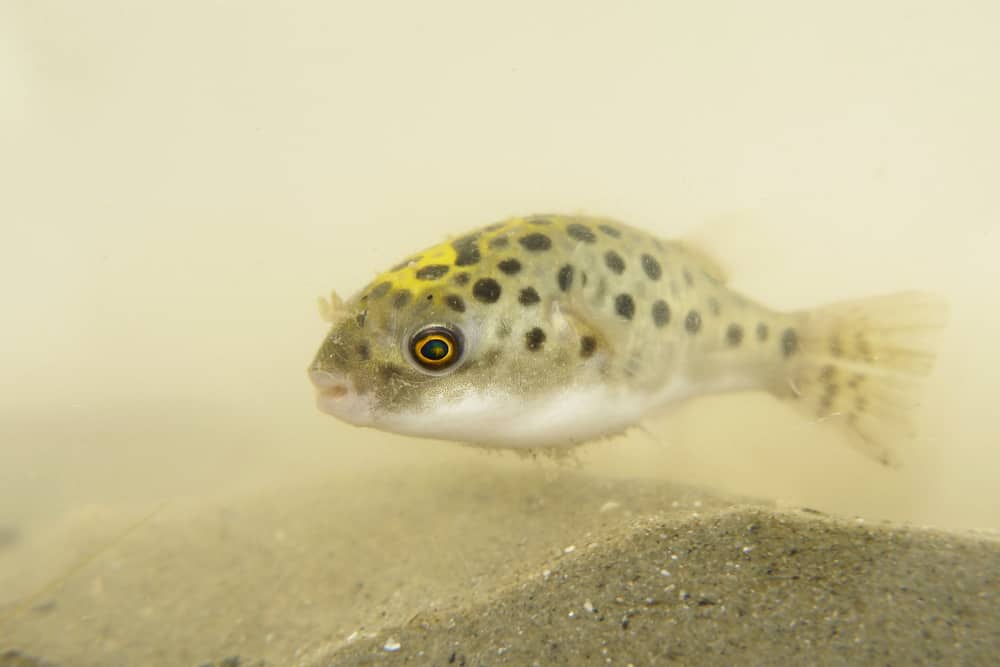
Cause 1: Bacterial Bloom
To understand bacterial blooms, you should first know about the nitrogen cycle in your tank.
This cycle starts with waste, including leftover food, fish waste, and dead leaves or animals.
Heterotrophic bacteria in the tank begin to feed off the organic matter and waste, turning it into ammonia.
Ammonia is toxic, and a spike in the aquarium will burn the fish’s gills and eventually kill them.
Fortunately, a group of beneficial bacteria named autotrophic bacteria turns ammonia into nitrite, which is still toxic.
They then turn nitrites into nitrates, a less deadly form of nitrates which can build up to 10 ppm without hurting the fish.
This cycle occurs naturally, but unusual sudden changes can trigger a bacterial bloom:
- Overfeeding the fish.
- Poor filtration.
- Waste buildup and not cleaning the substrate.
- Overcrowding the aquarium.
- A dead fish or plant in the tank
- Constantly cleaning the filter so that the beneficial autotrophic bacteria can’t build a colony.
- Cleaning the filter with tap water containing chlorine, which can kill the beneficial bacteria in the filter.
For these reasons, when the waste increases, the heterotrophic bacteria multiply rapidly to consume organic substances.
A colony of billions of microscopic heterotrophic bacteria is what makes the water look hazy and cloudy.
The colony can also form in a new aquarium setup, where the nitrogen cycle has yet to evolve.
In this case, the cycle will stabilize after a while, and the water becomes clear again.
Heterotrophic bacteria won’t hurt the fish by themselves.
However, they produce large amounts of ammonia very quickly, creating a dangerous and harmful ammonia spike.
Fixes
First, make sure the ammonia levels aren’t too high in the aquarium.
Second, since heterotrophic bacteria consume a great deal of oxygen while growing, check the oxygen levels, and ensure the water receives enough air during the bloom.
Use powerheads or air stones to create proper surface agitation, if necessary.
Next, it’s time to enhance water quality.
Start by looking for dead fish or snails in the tank.
If you find one, remove it immediately.
Remove any dried and dead leaves, as well.
Scoop up waste, uneaten food, or debris as much as you can.
Clean the substrate with an aquarium vacuum.
Do partial water changes to remove as much organic matter as possible.
Use treated water or RO water that doesn’t contain any organic chemicals.
If you can’t successfully take out all the waste, use a flocculant to clump up the debris particles, making it easy for the filter to get rid of them.
Clean the filter thoroughly using aquarium water beforehand.
You can speed the process along using enzyme mixtures to fix the bacterial bloom.
Cause 2: Sandstorm or Gravel Residue
If the aquarium water becomes cloudy after you’ve added a new substrate to the tank and filled it up with water, it’s because of the residue in the sand or gravel.
Even if you purchase substrate that’s advertised as “pre-washed”, you should clean it thoroughly before putting it in the tank.
The gravel or sand packs go through a long journey before you buy them at the store.
The bits brush against each other, creating fine dust and residue.
The particles will float in water and cause cloudiness while also hurting the fish.
A sandstorm can happen if you add sand to the aquarium after putting in water or if the water pump is directly positioned at the substrate, stirring up the cloudiness.
Fixes
Although the particles will settle down after a couple of days, it’s better to empty the tank, wash the substrate, and do the process all over again.
Otherwise, the cloudiness will return whenever you vacuum the substrate or a fish digs in it.
Plus, before the filter gets a chance to remove the particles from water, they may get into the fish’s system and cause health issues.
To get started, pour the substrate inside a bucket.
Fill the bucket with high-pressure water while moving the gravel or sand around using your hand.
The water will become dirty and cloudy.
Pour it out and repeat the process until the water is clear.
You can also put the substrate in a sieve and pour water on top until clean water runs out the other side.
When pouring water inside the tank filled with fine sand, place a clean plate on the substrate.
Then pour water on the plate from a short distance using a glass or jar.
This way, you won’t create a sandstorm.
Cause 3: Water Quality and Dissolved Constitutes
Depending on where you live, your water may be challenging.
The dissolved particles inside your tap water, including heavy metals, phosphate, or silicates, may be causing the cloudiness.
These chemicals can hurt your fish and increase the pH levels.
In saltwater tanks, calcium carbonate precipitation can also make the water white and cloudy.
This may happen due to too much calcium carbonate or too little magnesium in the water.
Fixes
Bring the high pH down to a stable level using pH buffers.
Adjust the magnesium levels.
Test your tap water using an aquarium test kit.
If you’re dealing with hard water, use water conditioners or install an RO unit to eliminate the excess contaminates.
You can purchase RO water or distilled water from pet shops.
Cause 4: Spawning
Spawning is an unlikely culprit for a cloudy white aquarium, but it can happen for two main reasons.
First, your fish might start spawning because you’ve created a healthy and happy environment for them to breed.
Several fish begin to spawn simultaneously, and the eggs and deposits will turn the water white.
Second, your fish may be acting up because of awful living conditions!
Sudden changes in the temperature, an abundance of food, or salinity can trigger this behavior in fish.
Fixes
Check the water parameters and make sure everything’s fine.
The spawn might have changed the water chemistry and pH, which could be dangerous.
If so, start doing a few big water changes to make the water clear again.
You might want to remove the eggs from the tank to raise them in a breeding tank.
Green Cloudy Water
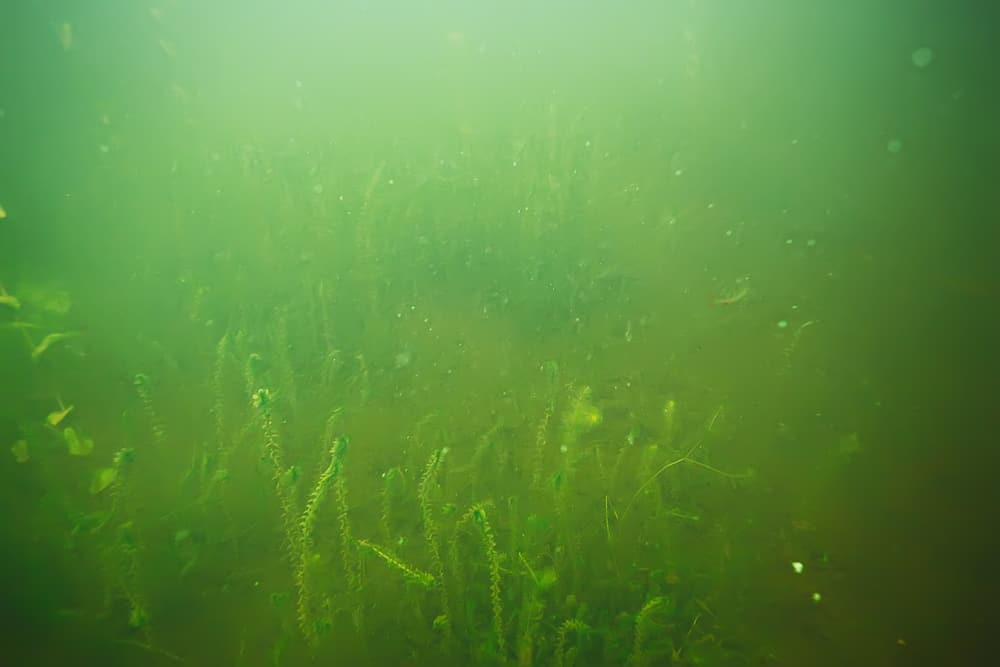
1. Cause: Algae Bloom
If the cloudy water has a green tint, then you’re dealing with an algae bloom.
A specific algae species named phytoplankton are microorganisms that can multiply and build a colony in the water, given the right conditions.
Too much light, especially strong sunlight, can trigger their outgrowth.
Carbon dioxide deficiency and high amounts of excess nutrients such as nitrates and phosphates can feed the algae and promote growth.
2. Fixes
- Lighting: If the tank is near a window where it gets direct sunlight during the day, move it further away or install some blinds. The aquarium shouldn’t get more than eight to ten hours of artificial light. Install a timer for your lighting system or fix the one you already have.
- Nitrates: Nitrates occur naturally in the aquarium as byproducts of fish waste. Although they won’t hurt fish in small amounts, excess levels can kill fish and fuel algae. The only way to keep the nitrate levels down is by keeping the tank clean. Do regular water changes and remove the waste, excess fish food, debris, and detritus using a vacuum. Make sure your filter is clean, and replace the filter media when it’s time. Don’t overstock the tank.
- Phosphates: If the phosphate levels are high, either your tap water has a high phosphate content, or you’re over-fertilizing/over-feeding the tank. Cut back on fish food and fertilizers that contain phosphate since the material can feed algae and aquatic plants. Remove decaying materials from the tank. Also, test your local water for excess amounts of phosphates and switch to RO water if necessary.
- UV filter: UV filters should be your last resort because they’re expensive, and they kill some of the free-floating beneficial bacteria along with phytoplankton. A UV system can clear your water of the green fog. However, it won’t solve the underlying issue which caused the problem in the first place.
Yellow Cloudy Water

1. Cause: Overcrowding and Overfeeding
The tank water will typically turn yellow and dirty if the aquarium is overstocked, and the fish are producing too much waste.
Under these circumstances, you can expect an ammonia or nitrite spike, which can further change the water’s color and harm the fish.
Some amateur hobbyists make the mistake of buying several baby fish without considering their mature size.
Research the fish you want to purchase and find out how much space they need once they’re fully grown.
Otherwise, they’ll get stressed, territorial, aggressive, and produce lots of waste.
Leftover food can turn into waste rather quickly and start to rot, making the water yellow and dirty.
2. Fixes
Invest in a larger aquarium for your fish or set up another one and separate some of the fish.
Also, change the water more quickly to get rid of the yellow color slowly.
However, the most important thing is not to overfeed your fish.
They should be able to eat the food you give them within a couple of minutes.
Remove the excess food from the tank after the fish have finished their meal.
Install a more powerful filter or get one with a chemical neutralizer like carbon to remove the water’s pollutants.
Brown or Black Cloudy Water
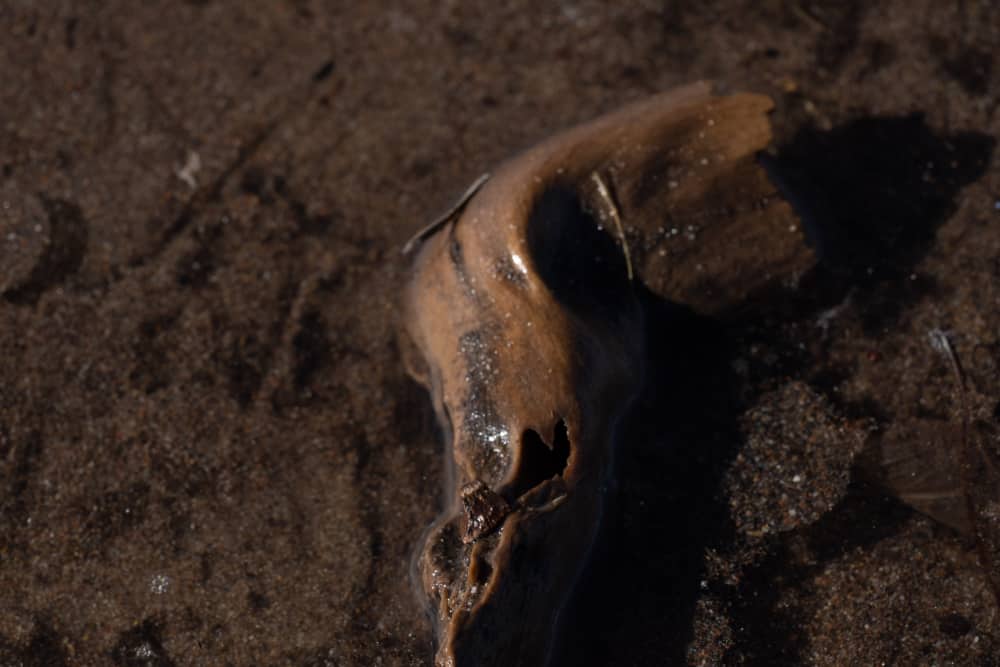
1. Cause: Driftwood and Dead Leaves
Some hobbyists choose to put real pieces of driftwood in their aquarium to create a natural and eye-catching look.
What’s more, driftwood provides hiding places for the fish and reduces territorial debates.
Driftwood’s surface makes an ideal home for beneficial bacteria and microbes to grow on.
Despite its advantages, natural driftwood releases a great deal of tannin into the water once it’s soaked for an extended period.
Tannin is a substance that turns the water yellowish-brown, making it look filthy when it’s not.
Tannin isn’t harmful to fish. In fact, some fish benefit from black-water aquariums because they mimic the fish’s environment.
However, if you’re not explicitly trying to create a black-water habitat, the brown color can be a problem.
Dead and dried leaves can also leach tannins into the water.
2. Fixes
First, you need to find the source.
If it’s dried leaves, remove them from the tank.
If the driftwood is leaching tannins, take it out of the aquarium and wash it properly with high-pressure water.
Then boil the driftwood piece if possible, or let it soak in water for a while to leach out all the tannin.
You can also forget about that piece and either get decorative driftwood or use wood types that won’t color the water, like manzanita.
After removing the source, do more frequent water changes, and install a carbon filter to eliminate the tannins.
Bubbly Cloudy Water
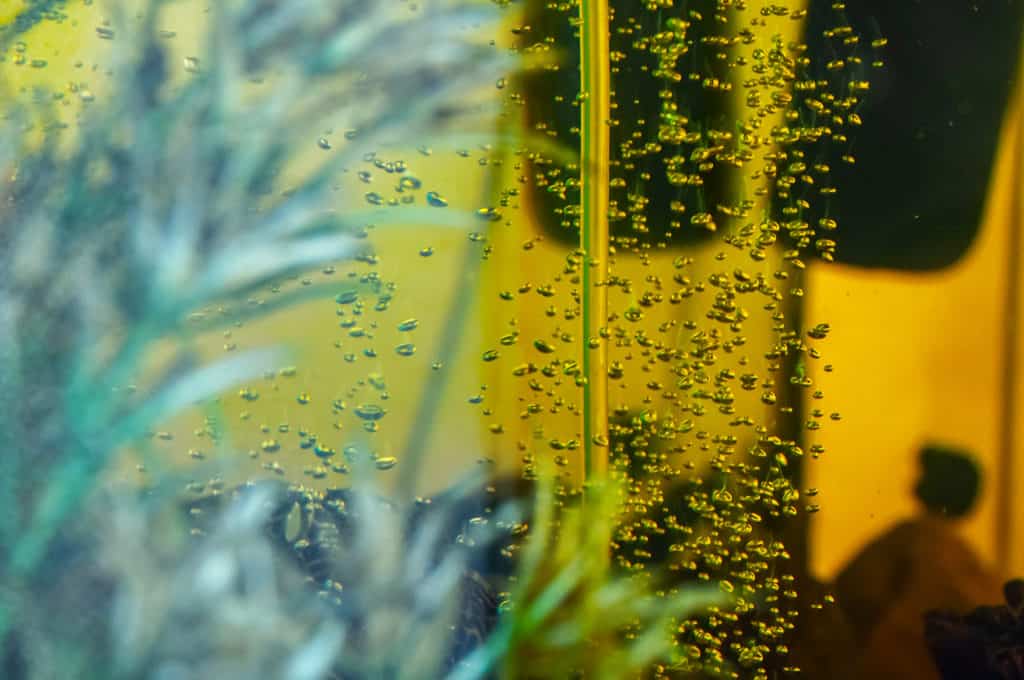
1. Cause: Microbubbles
Bubbles play an essential role in a healthy aquarium by exchanging oxygen and carbon dioxide.
Sometimes, however, too many microbubbles form in your tank, making it look cloudy and unclear.
It somehow feels like you’re watching an old TV screen.
This problem can have multiple culprits which may be hard to solve.
First, look for a leak in the plumbing, where excess air might be entering.
Check the skimmer and ensure it’s installed correctly, or else it may be causing too much turbulence in the water.
The turbulence can increase the water pressure flowing through the pipes from the display tank to the sump or vice versa.
As a result, the bubbles won’t have enough time to dissipate.
Nevertheless, remember that microbubbles don’t harm your fish.
They just make it hard for you to see them.
2. Fixes
Look for leakage around your skimmer and adjust its position if necessary.
Try placing the skimmer closer to where the water enters the sump for the bubbles to form before they leave the sump through the pumps.
Fix the leaky pipes using a sealant.
Slow down the water flow from the sump.
Install circulating pumps in the main tank to cause some flow instead.
Give the bubbles more time to pop by installing under or over baffles into the sump.
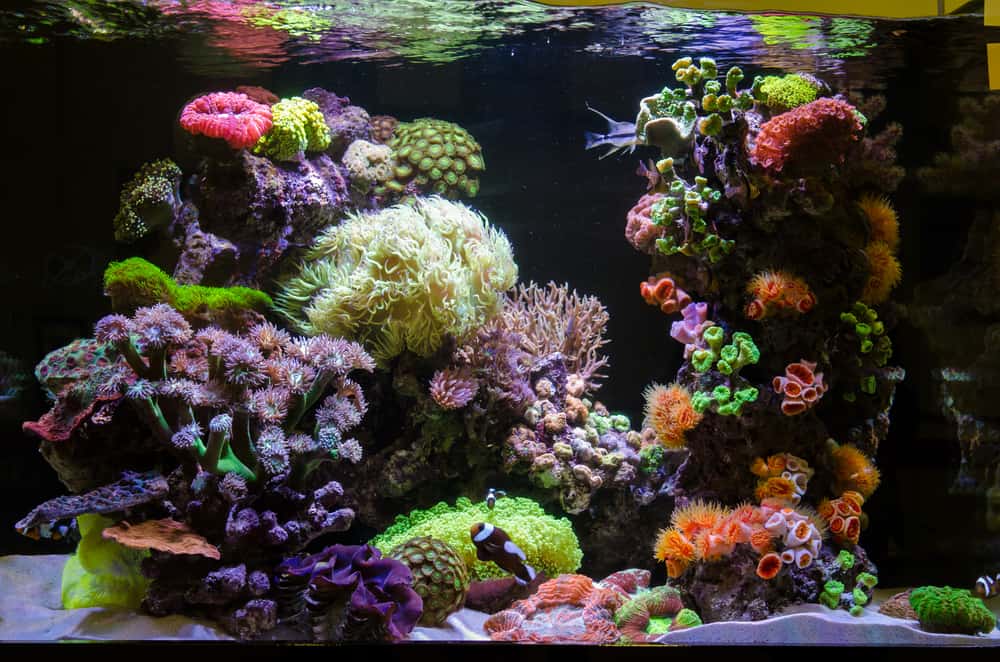
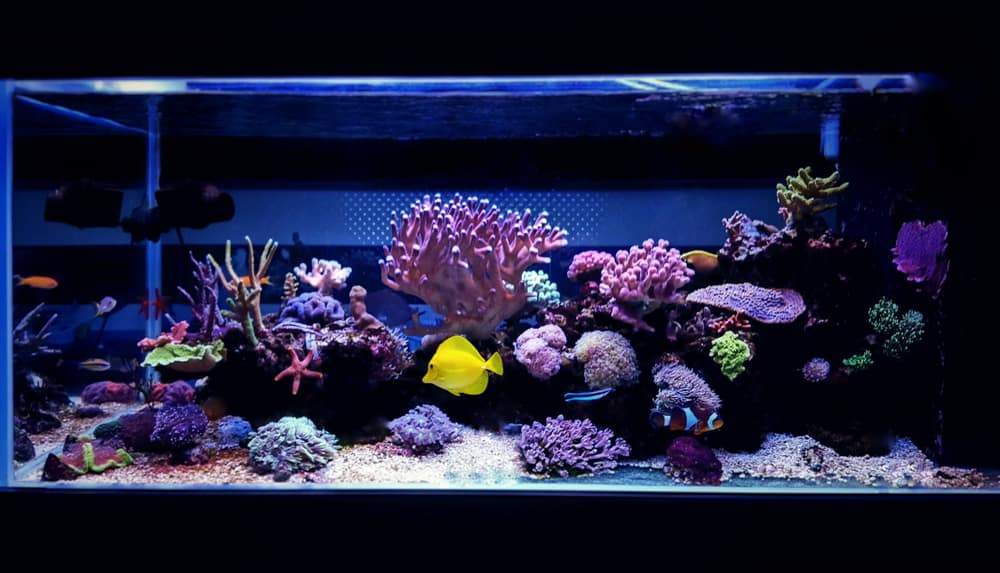

Leave a Reply
You must be logged in to post a comment.